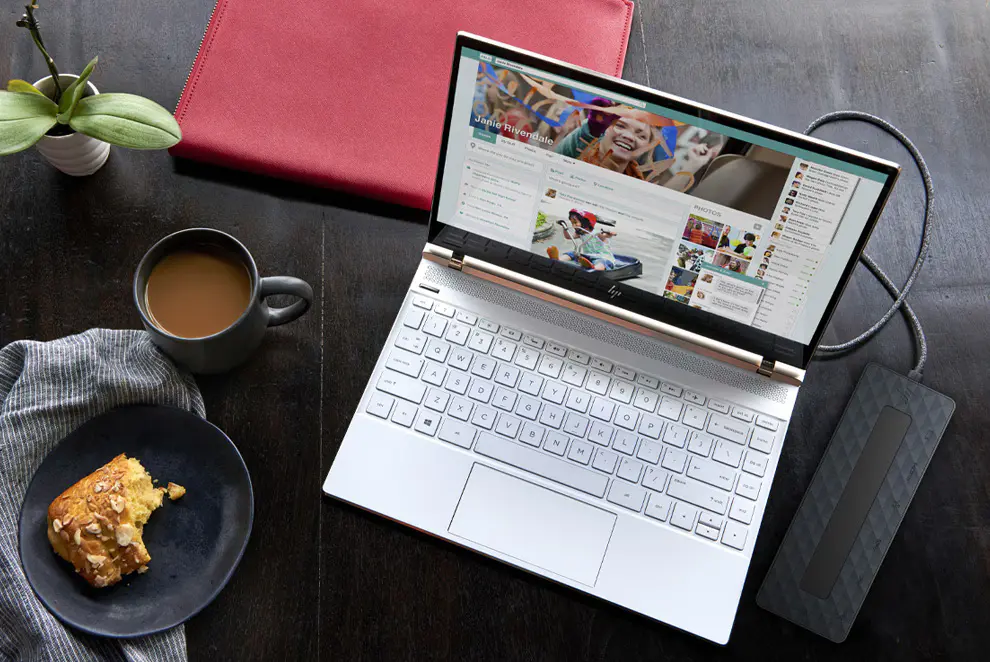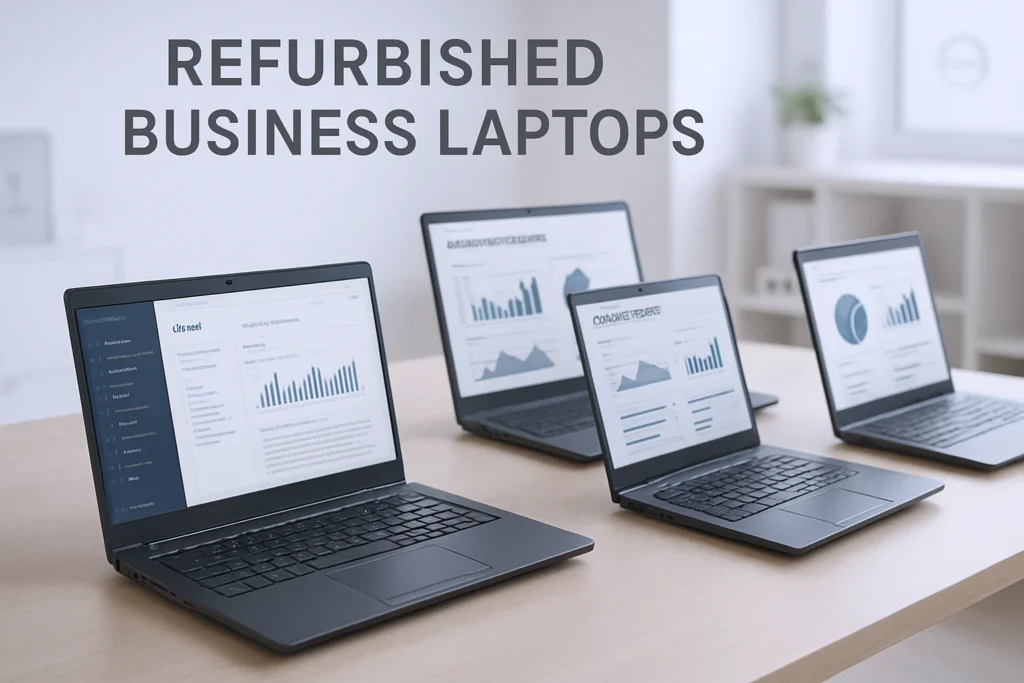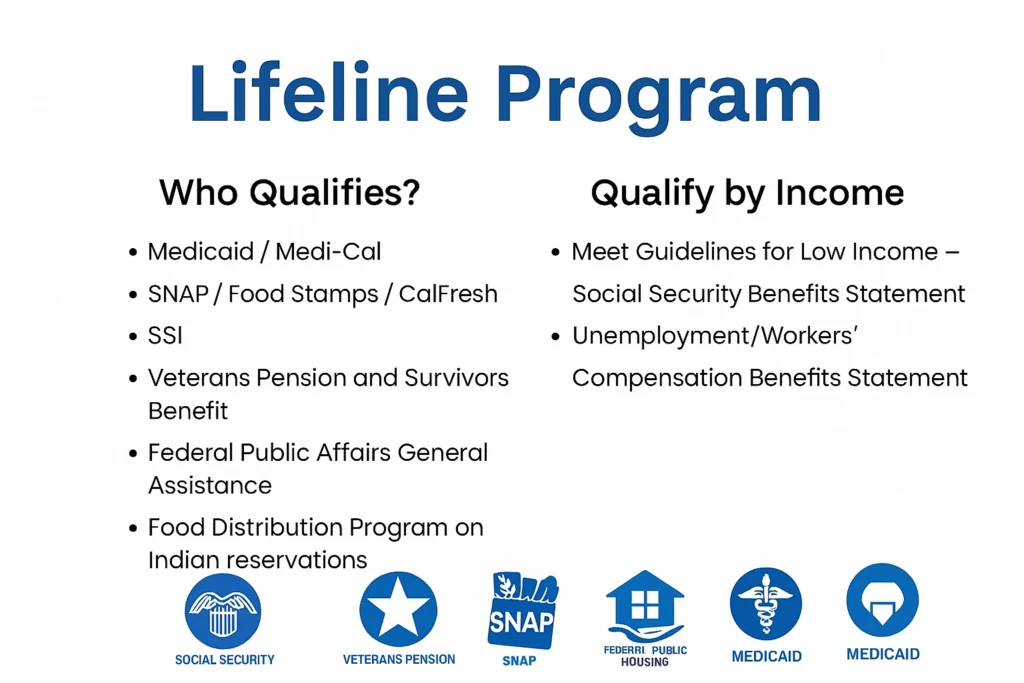Hey there! If you’re an EBT (Electronic Benefit Transfer) cardholder wondering, “Can I really get a free laptop?”—the answer is a big yes! While an EBT card itself doesn’t directly qualify you for a free laptop, it can be a significant factor in accessing programs that offer technology assistance.
Imagine having a laptop that opens up online classes, job applications, or even helps your kids with homework—all at your fingertips.
This guide is your treasure map to scoring that game-changing device.
Ready to dive in? Let’s go!
Here are four big players:
-
PCs for People: Refurbishes computers and gives them to qualifying individuals.
-
EveryoneOn: Connects low-income people with affordable tech and internet.
These groups aim to bridge the digital divide, making sure everyone has access to technology.
-
Human-I-T: Provides free or affordable laptops who are eligible through programs like EBT.
-
Lifeline Assistance Program: While mainly for discounted phone and internet services, Lifeline partners with certain companies to offer discounted laptops or computers for eligible families.
This guide is your one-stop shop to figure it all out—think of it as your treasure map to scoring that game-changing device. Ready to dive in? Let’s go!
What is EBT and How Does it Relate to Laptops?
EBT (Electronic Benefit Transfer) is a system that delivers government benefits like SNAP (food stamps) or TANF to low-income individuals and families in the U.S.
It’s your lifeline for essentials like food, but here’s the exciting part: while EBT doesn’t directly hand out laptops,
it proves you’re enrolled in assistance programs.
Many nonprofits and organizations use this as proof of eligibility to offer you free or low-cost technology.
Why does this matter? In today’s digital world, laptops are vital for school, job hunting, and staying connected.
Programs like PCs for People, Everyone On, and others step in to bridge the digital divide, ensuring folks like you get access to the tech you need.
Wait, Does EBT = Free Laptops? Busting the Myth Wide Open
First things first—let’s tackle the big question: “Is there a free government laptop program just for EBT users?” Nope, not quite.
There’s no official federal program that says, “Here’s a laptop because you have EBT.” But don’t lose hope!
The real magic happens with trusted organizations like PCs for People, Computer With Causes, The ON IT Foundation, and EveryoneOn, which team up with government initiatives to get tech into the hands of low-income folks.
Your EBT card? It’s your golden ticket to proving eligibility for these programs since it shows you’re part of SNAP or other assistance plans.
So, no direct handout, but plenty of awesome options—stick with me to find out how!
Why a Laptop Is a Total Game-Changer

Picture this: you’re applying for a job online, your kid’s zooming through virtual school, or you’re learning a new skill to level up your life—all because you’ve got a laptop.
A 2024 Pew Charitable Trusts report indicates that 41% of U.S. households earning less than $30,000 annually do not own a desktop or laptop computer
That’s a massive roadblock to education, jobs, and even Accessing various services.
Free or low-cost laptops smash those barriers, giving you the tools to thrive—not just survive.
It’s not just a gadget; it’s your ticket to equality in today’s digital world
Beyond Government: Non-Profits and Local Efforts
It’s not just federal programs that recognize the value of your EBT status.
Many non-profit organizations and local community initiatives aim to distribute free laptops to those in need, often prioritizing EBT holders.
Why? Because your EBT card signals that you’re part of a low-income household, aligning with their mission to support underserved communities.
For instance, organizations like Computers with Causes or local library programs might ask for proof of government assistance—your EBT card fits the bill perfectly.
Types of Laptops Provided: Models and Specifications
The laptops offered to EBT users through these programs are typically refurbished or budget-friendly, designed for basic tasks like web browsing, online learning, and job applications.
Refurbished laptops are reliable, often with warranties, and suitable for basic tasks like browsing and schoolwork. Expect specs like 4GB RAM and 128GB storage.
Here’s what you can expect:
- Chromebooks:
- Purpose: Ideal for internet-based tasks and education.
- Specifications: 4GB RAM, 32-64GB storage, Chrome OS.
- Why: Affordable and easy to use with Google apps.
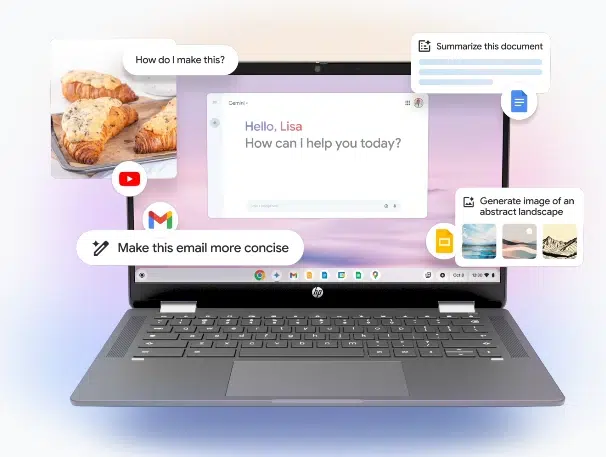
- Refurbished Business Laptops:
- Models: Dell Latitude (e.g., 5480), Lenovo ThinkPad (e.g., T460), HP models.
- Specifications: Intel Core i3/i5, 4-8GB RAM, 128-256GB SSD, Windows 10.
- Why: Durable and reliable for productivity.
- Basic Windows Laptops:
- Models: Dell Inspiron 14, HP Pavilion, or similar entry-level models.
- Specifications: Intel Celeron or AMD A-series processor, 4GB RAM, 128GB SSD, Windows 10.
- Why: Versatile for everyday use.
Note: Exact models and specs depend on the program and available donations.
Some may offer higher-end options (e.g., MacBook Air/Pro) if partnered with tech companies, but this is less common.
Step 1: Explore Laptop Programs Near You
Start by researching programs that offer free or low-cost laptops to low-income individuals and families.
Many organizations partner with Government agencies or companies to provide these resources.
Below is a clear breakdown of Five notable programs: PCs for People, SmartRiverside, EveryoneOn, Computers with Causes, and The ON IT Foundation
These programs vary in focus and eligibility, and some allow EBT (Electronic Benefits Transfer) to play a role in qualifying.
PCs for People
- Details: Refurbishes donated computers and offers them for free or at a low cost. Nationwide availability.
- Eligibility: Must meet income guidelines or participate in a program like EBT. Verify on their website.
- How to Apply: Apply online via the PCs for People website with proof of eligibility.
- Benefits: Free or low-cost refurbished laptops/desktops. Some areas offer affordable internet.
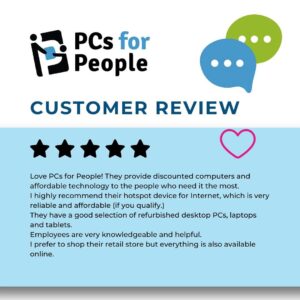
Everyone On
- Details: Connects low-income people to affordable internet and devices through partnerships.
- Eligibility: Must meet income requirements or be in a qualifying assistance program. Check their website.
- How to Apply: Input your ZIP code on the Everyone On site, then apply online with eligibility proof.
- Benefits: Low-cost computers and budget-friendly internet options.

Note: Program availability varies by location. Visit their websites to find options in your area.
Computers with Causes
- Who Is Eligible?
This program provides refurbished computers to individuals in need, such as students, job seekers, seniors, veterans, and others. While EBT isn’t a specific requirement, it can help show financial need, a key consideration for approval. - How to Apply:
- Visit the Computers with Causes website and download the application form.
- Fill it out with your personal details and explain why you need a computer.
- Mail the completed form to the address provided.
- Applications are reviewed within 30 days, and you’ll be contacted if a computer is available.
- Using EBT:
Mention your EBT status in the application to highlight your financial situation, which may strengthen your case.
SmartRiverside
SmartRiverside is a nonprofit organization dedicated to bridging the digital divide. Their mission goes beyond simply distributing computers that are in need—they also aim to promote computer literacy and digital learning among underserved communities.
The program collaborates with government assistance programs to offer free tablets or laptops to eligible individuals. However, eligibility requirements can vary by state, as they are based on local government criteria.
How to Apply for a Free Laptop Through SmartRiverside
If you’re interested in receiving a free laptop through SmartRiverside, here’s a step-by-step guide to help you through the process:
- Visit the Smart Riverside Website
Start by going to the official Smart Riverside website to access the application page. - Start the Application
Follow the instructions provided on the website. You may need to scroll or navigate using on-page arrows to reach and complete the application form. - Explain Your Situation
You’ll likely be asked to write a short letter or statement explaining your personal situation—why you need a laptop and how having one would positively impact your life (e.g., for education, job search, remote work, or daily tasks). - Undergo a Needs Assessment
As part of the process, you may be asked to share details about your household income or current government assistance status. This helps determine your eligibility. - Reference and Background Checks
Be prepared for a possible reference check and basic background screening. These steps help ensure fairness and confirm the information provided. - Meet Eligibility Criteria
SmartRiverside operates on a need-based system, meaning applicants must demonstrate financial need or qualify through government assistance programs (like SNAP, TANF, or Medicaid).
The ON IT Foundation
- Who Is Eligible?
This program targets K-12 students from low-income families. To qualify, a student must:- Be in grades K-12.
- Attend a public school in the U.S.
- Qualify for free or reduced school lunch.
If your family is on EBT/SNAP, your child likely qualifies for this lunch program, making them eligible.
- How to Apply:
- A parent or guardian must write a letter requesting a free computer, including:
- Student’s name, age, grade, school name, address, and phone number.
- Parent/guardian’s name, address, and phone number.
- Attach proof from the school (on letterhead) confirming the student’s free or reduced lunch eligibility.
- Mail everything to:
text
The On It Foundation
ATTN: Free Computer Application
18520 NW 67th Avenue, Suite 186
Miami, FL 33015 - Note: Computers are distributed based on availability, and you may be waitlisted.
- A parent or guardian must write a letter requesting a free computer, including:
-
Using EBT:
EBT/SNAP participation often qualifies students for free or reduced lunch, serving as an indirect pathway to eligibility.
Programs Offering Free Laptop using EBT in 2025
The Affordable Connectivity Program (ACP)
The Affordable Connectivity Program (ACP) officially ended on June 1, 2024, after Congress did not approve additional funding. This means eligible households no longer receive the monthly internet discount or the one-time device discount that the program previously provided.
Although the ACP program has ended, AirTalk Wireless continues to support low-income individuals through the Lifeline program, which still offers free phones and, in some cases, discounted or free laptops and tablets—based on availability.
Airtalkwireless:
Get a Free or Discounted Laptop with AirTalk Wireless Through the Lifeline Program
If you’re looking to get a free or affordable laptop using government assistance, AirTalk Wireless is one of the most trusted names in the game. As an FCC-approved Lifeline provider, AirTalk Wireless offers more than just free phones—they also provide discounted or even free laptops to qualifying individuals in select areas.
What Is AirTalk Wireless?
AirTalk Wireless is a certified Eligible Telecommunications Carrier (ETC) and MVNO (Mobile Virtual Network Operator) operating under AirVoice Wireless. The company has been helping Americans stay connected for over 20 years, providing high-quality smartphones, tablets, and laptops through government assistance programs.
While the Affordable Connectivity Program (ACP) has officially ended, AirTalk continues to support eligible low-income households through the Lifeline program, available in over 41 U.S. states.
Why Choose AirTalk for a Free or Discounted Laptop?
AirTalk goes beyond phone services by offering:
- Free or low-cost laptops and tablets (availability may vary)
- Free smartphones (including iPhones, Samsung Galaxy, and Motorola)
- Free unlimited talk, text, and high-speed data
- Fast, online application with no credit checks or contracts
- Free shipping and excellent customer service
How to Qualify for a Laptop via AirTalk Wireless
To receive a laptop or device through AirTalk, you must:
- Qualify for the Lifeline program, usually by showing proof of low income or participation in programs like EBT, SNAP, Medicaid, or TANF
- Live in an eligible state or region (offers may vary by location)
- Complete the application process on AirTalk Wireless’s official website
Once approved, you’ll have access to a range of free or discounted devices—sometimes even laptop bundles or upgrades, depending on availability.
While AirTalk Wireless may not guarantee a free laptop for everyone, your eligibility through Lifeline increases your chances significantly—especially when stock permits. If you’ve been looking for a reliable way to bridge the digital gap with a new laptop, AirTalk Wireless is one of the best Lifeline providers to consider.
Track Your Application
AirTalk also provides a real-time application tracking system, where users can:
- Enter their email, ZIP code, and SSN to check status
- Use a clean, user-friendly dashboard
- Get alerts for missing documents or updates
Lifeline Discounts: Lower Your Phone and Internet Bills
The Lifeline program is a federal initiative designed to make communication services more affordable for eligible low-income households by providing monthly discounts on phone or internet bills.
Key Features:
-
Monthly Discounts: Eligible participants can receive up to $9.25 off their monthly phone or internet service costs.
-
Eligibility Criteria: Households qualify if their income is at or below 135% of the Federal Poverty Guidelines or if a member participates in assistance programs such as SNAP, Medicaid, or SSI.
-
Application Process: Applicants must provide documentation to verify eligibility, which may include proof of income or participation in qualifying programs.
Does it give free devices?
Lifeline itself mostly gives discounts on services — but some participating companies also offer free or low-cost smartphones, tablets, or even laptops as part of their plans.
In short: Lifeline helps people afford phone or internet bills and sometimes provides access to discounted devices through partner providers.
The Microsoft Authorized Refurbisher Resource Center
The Microsoft Authorized Refurbisher (MAR) Resource Center is a central hub for businesses and consumers interested in high-quality refurbished devices.
It offers comprehensive guidelines, best practices, and compliance requirements for companies participating in the MAR program, ensuring that refurbished devices meet stringent technical, cosmetic, and functional standards.
This commitment guarantees users reliable performance and peace of mind with their purchases.
For Refurbishers:
- Access to Genuine Software Licenses: MAR partners receive exclusive discounts on genuine Microsoft licenses for refurbished computers, enabling them to offer devices with authentic Windows operating systems and Office suites.
- Technical Support and Training: The resource center provides engineering support, technical training, and deployment tools to streamline the refurbishment process and maintain high-quality outputs.
- Marketing and Recognition: Partners benefit from marketing assets and recognition as official Microsoft Authorized Refurbishers, enhancing their market credibility.
For Consumers:
- Quality Assurance: Purchasing from MAR-certified refurbishers ensures devices come with genuine Microsoft software, including the latest updates and security patches, along with warranties comparable to new products.
- Environmental Impact: Opting for refurbished devices supports environmental sustainability by reducing electronic waste and promoting the reuse of technology.
The MAR Resource Center also emphasizes the importance of using genuine Windows software to ensure security and performance.
By adhering to expert guidelines and industry best practices, the center fosters trust and authority, making it an invaluable resource for those interested in refurbished technology.
Geographic Availability
Program coverage varies by location:
-
PCs for People: Focuses on states like Minnesota, Maryland, and Colorado. Check their website for availability in your area.
-
EveryoneOn: Partner availability depends on your ZIP code.
-
Computers with Causes and The ON IT Foundation: Serve nationwide but may have regional limitations.
If a program isn’t available in your area, explore local alternatives like community centers or libraries offering free tech access.
Step 2: Confirm Your Eligibility

Having an EBT card can qualify you for a free laptop, but programs often have additional criteria.
Here’s what you need to know:
- Income Limits: Your household income must typically fall below a set threshold, often tied to federal poverty guidelines.
- Government Assistance: Enrollment in programs like Medicaid, SSI, or TANF may make you eligible.
- Required Documents: Be ready to submit proof, such as your EBT card, income statements, or an official letter from an assistance program.
Always review the specific rules on the program’s website before applying..
Why EBT Gives You an Advantage
Here’s the key: being an EBT holder isn’t just a status—it’s a gateway.
Programs offering free or discounted laptops often have limited resources and strict eligibility rules.
By already participating in SNAP, you’ve cleared a major hurdle that others might struggle with, like proving income eligibility.
This puts you ahead of the pack, especially when laptops are distributed on a first-come, first-served basis.
Tips to Maximize Your Chances
- Act Fast: Availability can be limited due to high demand, so don’t wait to apply.
- Check Requirements: Each program has its own rules—some might need additional documentation beyond your EBT card.
- Explore Multiple Options: Look into local charities, nonprofit organizations, or school-based initiatives that offer free or discounted laptops to EBT cardholders.
Your EBT card is more than a benefits tool—it’s a stepping stone to accessing technology that can empower you to learn, work, and connect.
Stay tuned as we dive deeper into specific programs and strategies to help you secure that laptop!
Step 3: Apply for a Laptop Using Your EBT Card
Applying is straightforward if you follow these steps. Some programs, like the Emergency Broadband Benefit (EBB), offer a $100 credit toward a laptop for SNAP (food stamp) participants.
- Verify Eligibility with USAC:
- Complete the online eligibility check at the Universal Service Administrative Company (USAC) website.
- You’ll receive an email confirming if you qualify for EBB benefits.
2. Enroll in the $100 EBB Credit Program:
- Once approved, visit the program’s website and register for the credit.
- Fill out the online form with your details.
- Skip the Check: If you already receive Lifeline benefits, you don’t need to re-verify eligibility.
3. Claim Your Laptop:
- After approval, the FCC sends confirmation through the provider you applied with.
- Use this to get $100 off a laptop’s cost.
Extra Perks: Some programs offer free classes to help you learn how to use your new device.
Be sure to provide accurate information on forms—mistakes can delay your application.
What is EBT? Understanding the Benefits and How to Use Them
Understanding EBT and Technology Assistance
EBT (Electronic Benefit Transfer) helps people with low income buy food using a special debit card.
It doesn’t give out free laptops, but there are other programs that can help you get technology, like laptops, at a lower cost or even for free if you qualify for benefits like EBT.
There’s no government program that only gives free laptops to people with EBT cards.
However, there are different initiatives that assist low-income families in getting technology.
For example, organizations like PCs for People refurbish used laptops and provide them to individuals and families who face financial barriers to accessing technology.
How College Students Can Get a Free Laptop – A Complete Guide
Watch Out: Don’t Fall for Sneaky Scams!
Here’s a heads-up: not everyone out there is your friend. Scammers love promising “free laptops” to EBT holders, but legit programs won’t:
- Ask for your EBT PIN or full card number (huge red flag!).
- Demand big upfront payments (small fees are okay, but hundreds of bucks? Run!).
Stick to well-known groups like the ones I’ve mentioned, and double-check their websites.
Oh, and one more thing—these laptops are often refurbished.
That means they’re pre-loved but fixed up to work great.
Not brand-new, but totally functional for your daily grind!
Why You Need to Jump on This Now
Still on the fence? Let me paint you a picture of what a laptop can do:
- Level Up Your Skills: Take free online courses—think coding, graphic design, or anything that boosts your resume.
- Land That Job: Apply online, build a killer resume, or even work from home.
- Help the Kids: Keep them on track with schoolwork and virtual classes.
- Stay in the Loop: Video chat with family, manage bills, or book telehealth visits.
This isn’t just about a laptop—it’s about unlocking your potential. The process is simple, and the payoff? Life-changing. Why wait?
Wrap-Up: Your Tech Future Starts Today!
Let’s sum it up: technology isn’t a luxury anymore—it’s a must. For EBT users, a free or low-cost laptop can be the key to a better job, a stronger education, or just keeping up with the world.
No, the government won’t drop one on your doorstep, but with programs like PCs for People and EveryoneOn, you’ve got real options.
Follow this guide—research, apply, and grab that laptop—and you’re on your way to a brighter, more connected future.
Take Action Now: Hit up those websites, see if you qualify, and apply today. You’ve got nothing to lose and a whole lot to gain.
Let’s make it happen—your laptop adventure starts right here!
FAQs
The most commonly asked question is “I have an EBT card with TANF benefits. Can I use it to get a free laptop?
Yes, having an EBT card with TANF benefits can make you eligible for some free or discounted laptop programs—but you don’t automatically get a free laptop just for having the card.
Here’s how it works:
- The EBT card shows you’re receiving government assistance (like TANF or SNAP)
- Many programs that offer free or low-cost laptops use participation in TANF or SNAP as proof of eligibility
- You’ll need to apply separately to these programs (like PCs for People, Human-I-T, Computers with Causes, etc.) and show your EBT card or proof of TANF benefits
Can I really get a free laptop with EBT?
Yes, different programs give free or low-cost laptops to people and families with EBT benefits. Groups like PCs for People and EveryoneOn are good places to start.
What documents do I need to apply for a free laptop?
You will usually need a copy of your EBT card, proof of income, and sometimes a short statement about why you need a laptop.
How long does it take to receive a laptop after applying?
How long it takes can be different depending on the group. It usually takes a few days to a few weeks for them to look at your application and say yes, and then they will send the laptop.
Are there other programs besides EBT for free laptops?
Yes, other help programs like Medicaid, SSI, and TANF can also help you get free laptops through similar programs.
What should I do if my application for a free laptop is denied?
If your application is turned down, look at the rules again to make sure you meet them. You can also look at other groups and programs that might give similar help

